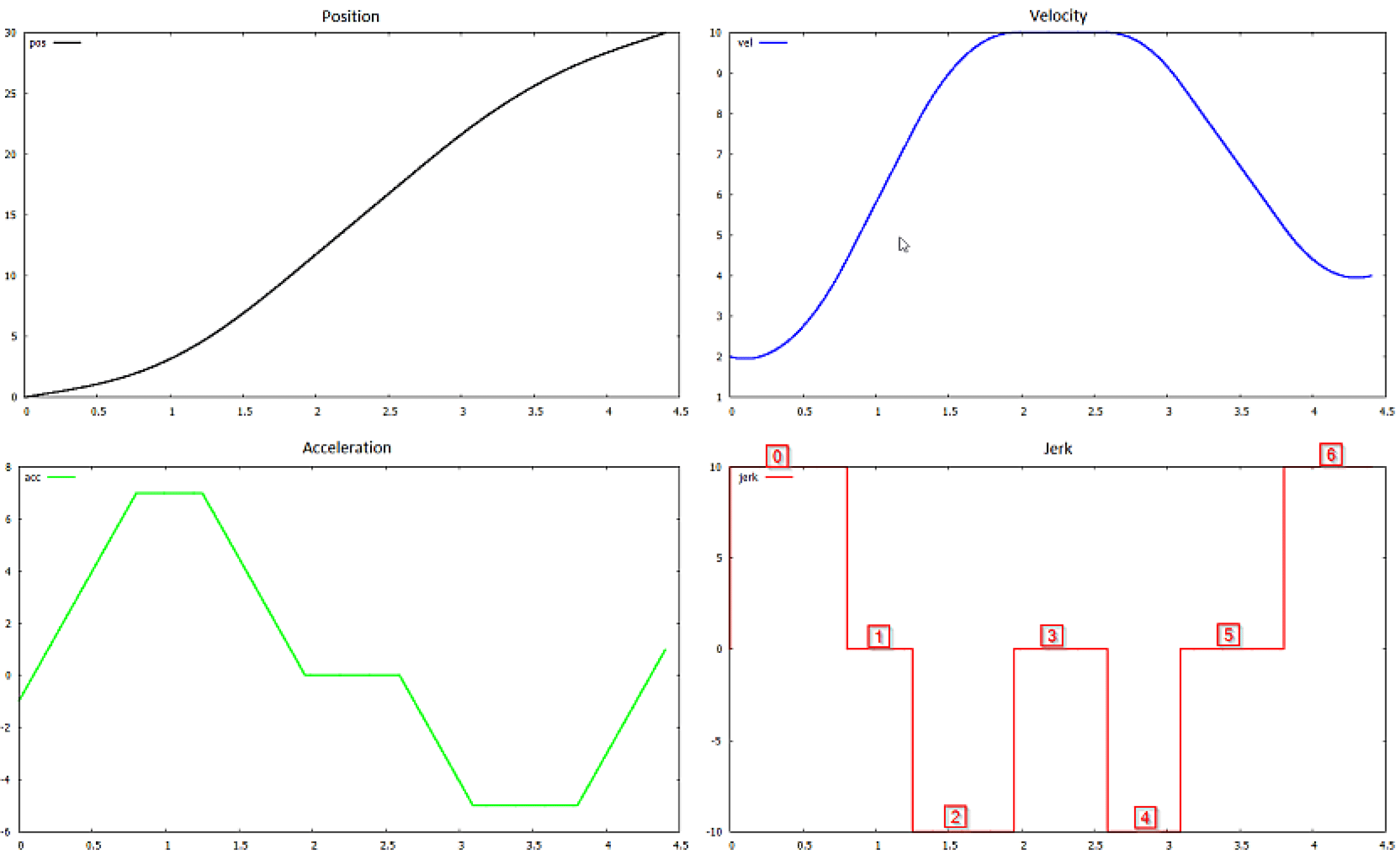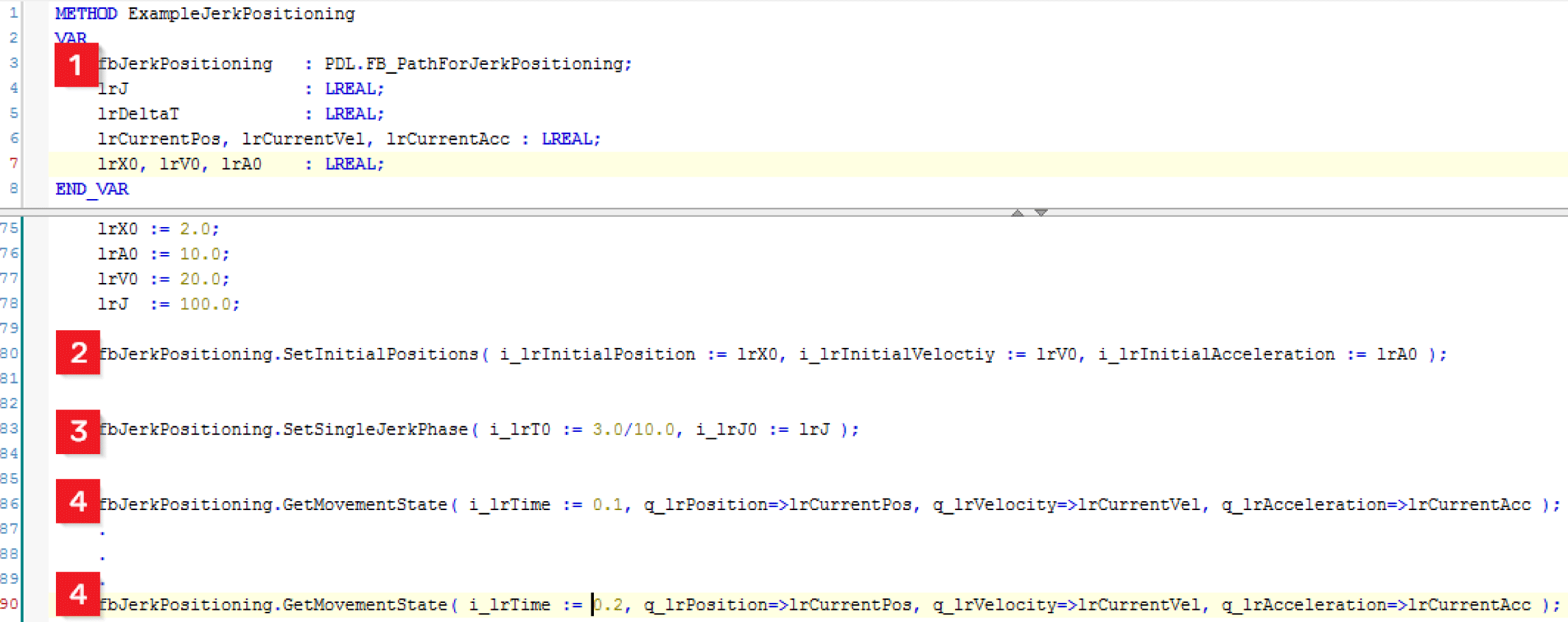FB_PathForJerkPositioning - General Information
|
Type: |
Function block |
|
Available as of: |
V1.5.3.0 |
|
Inherits from: |
- |
|
Implements: |
- |
|
Versions: |
Current version |
Calculation for analysis of a motion positioning instruction which is based on a definition of up to 10 jerk phases.
Often positioning is done with movements that are composed by phases with linear acceleration.
Such movements can be constructed by applying phases with constant jerk.
The solution of the positioning job (x0,a0,v0)→(x1,v1,a1) is of such type with up to 7 jerk phases.
An example of such positioning is shown in graphic below.
There are some other movements that can be constructed with constant jerk phases as, for example, changing the velocity.
In this case 3 jerk phases are sufficient .
The function block FB_PathForJerkPositioning allows a movement of up to 10 jerk phases.
Example of a 7-phase positioning. The jerk phases are assigned to the indices: 0, 1, …6.

But the concept of applying several phases of constant jerk is general. Thus the function block FB_PathForJerkPositioning is used. It gets the initial state (x0,a0,v0) of a movement and several jerk phases, that are described with the jerk value j_i and the duration t_i of the phase. This defines the motion state for arbitrary time stamps during the jerk phases.
The function block FB_PathForJerkPositioning is not a cyclic one. It is not necessary to traverse the path cyclically by calling the main body cyclically. The movement state can be checked in any order.
The function block FB_PathForJerkPositioning is either the result of FB_RgPosStartOptimised or freely initialized by the specification of consecutive jerk phases.
FB_PathForJerkPositioning uses seconds as time unit and a general length unit u.
Usage
oThe usage of this function block is explained by a simple project shown in figure below.
o1. Create an instance of FB_PathForJerkPositioning.
o2. Initialize its starting point at t=0.
o3. Set the jerk phases (here just a single jerk phase).
o4. Then at any point of your program you can query the movement state at a specific time point t.
In case of FB_PathForJerkPositioning as a result of FB_RgPosStartOptimised the steps 2+3 are replaced by a simple assignment. Also refer to FB_RgPosStartOptimisedUsageStep 5.
Exemplary usage of the function block FB_PathForJerkPositioning

NOTE: POU is not addressable!
The POU must not be called up.
The function block can be used by calling it up over methods and properties.
|
Name |
Description |
|---|---|
|
Returns the phase index used last. |
|
|
Returns the position at the end of the motion. |
|
|
Returns the position, velocity, acceleration, and jerk for a specific time. |
|
|
Set the initial position, velocity, and acceleration. |
|
|
Sets the jerk phases for the complete motion instruction with time- and jerk arrays. |
|
|
Sets a single jerk phase. |
|
|
Sets three jerk phases. |
|
|
Sets two jerk phases. |